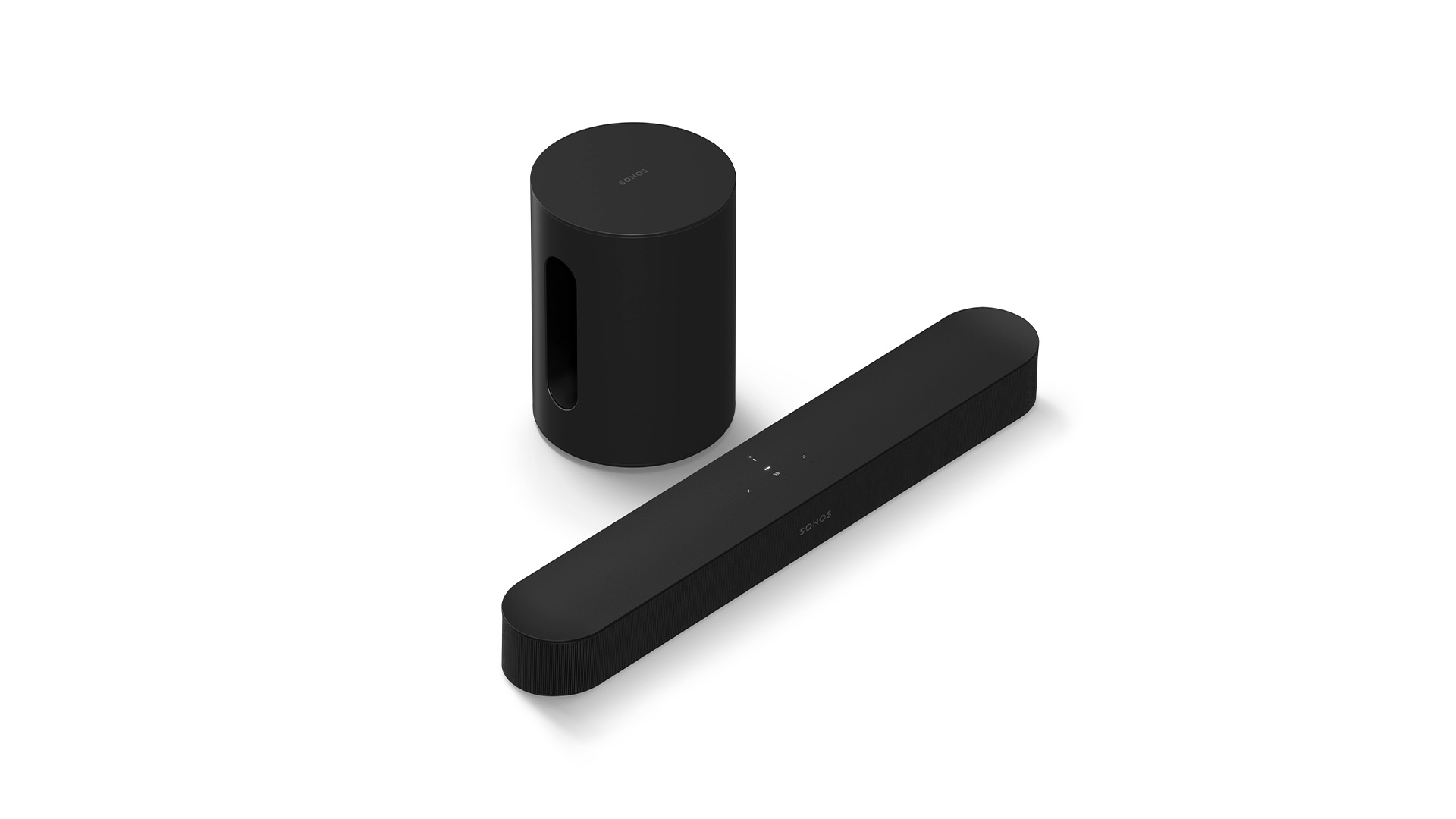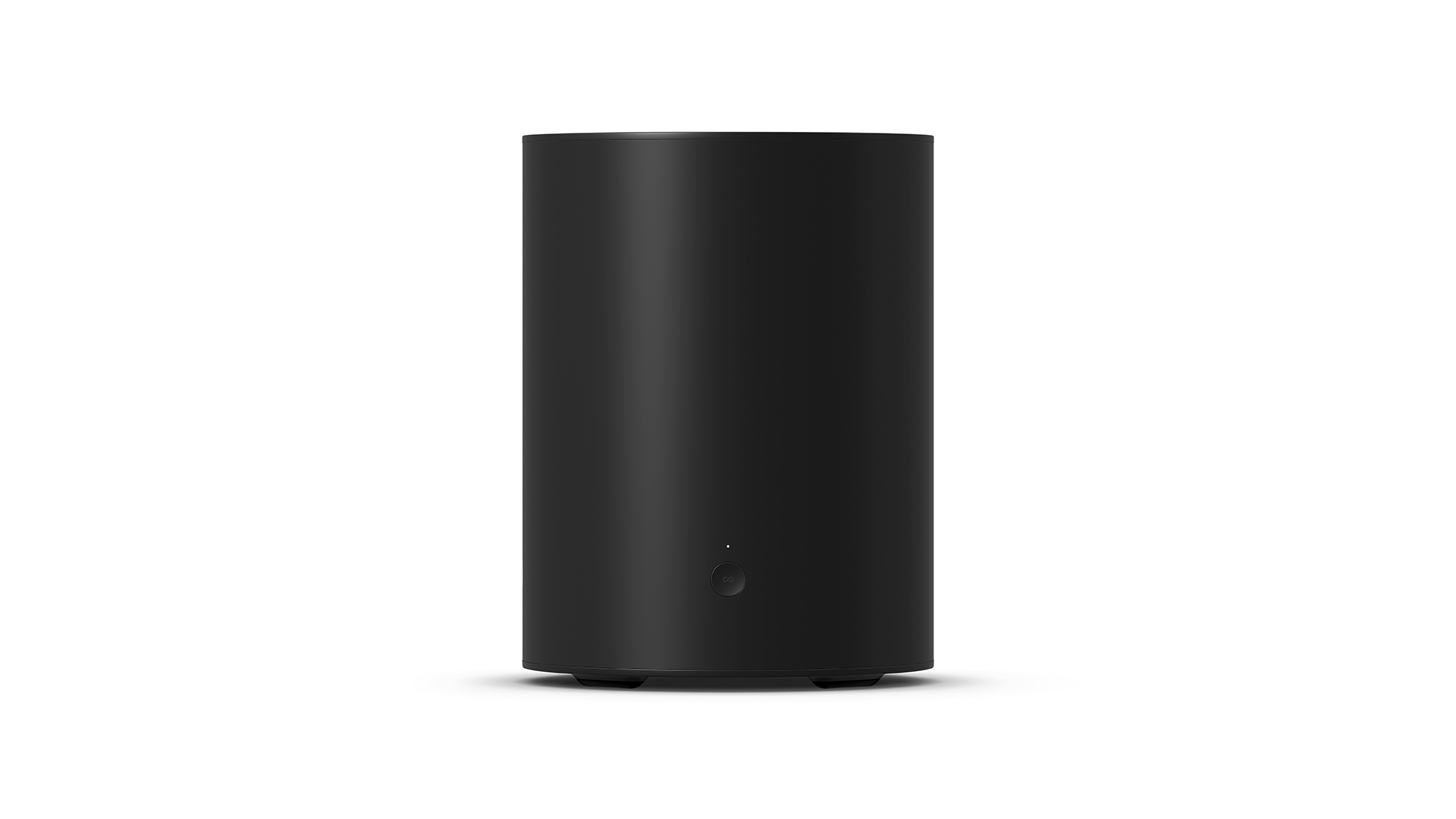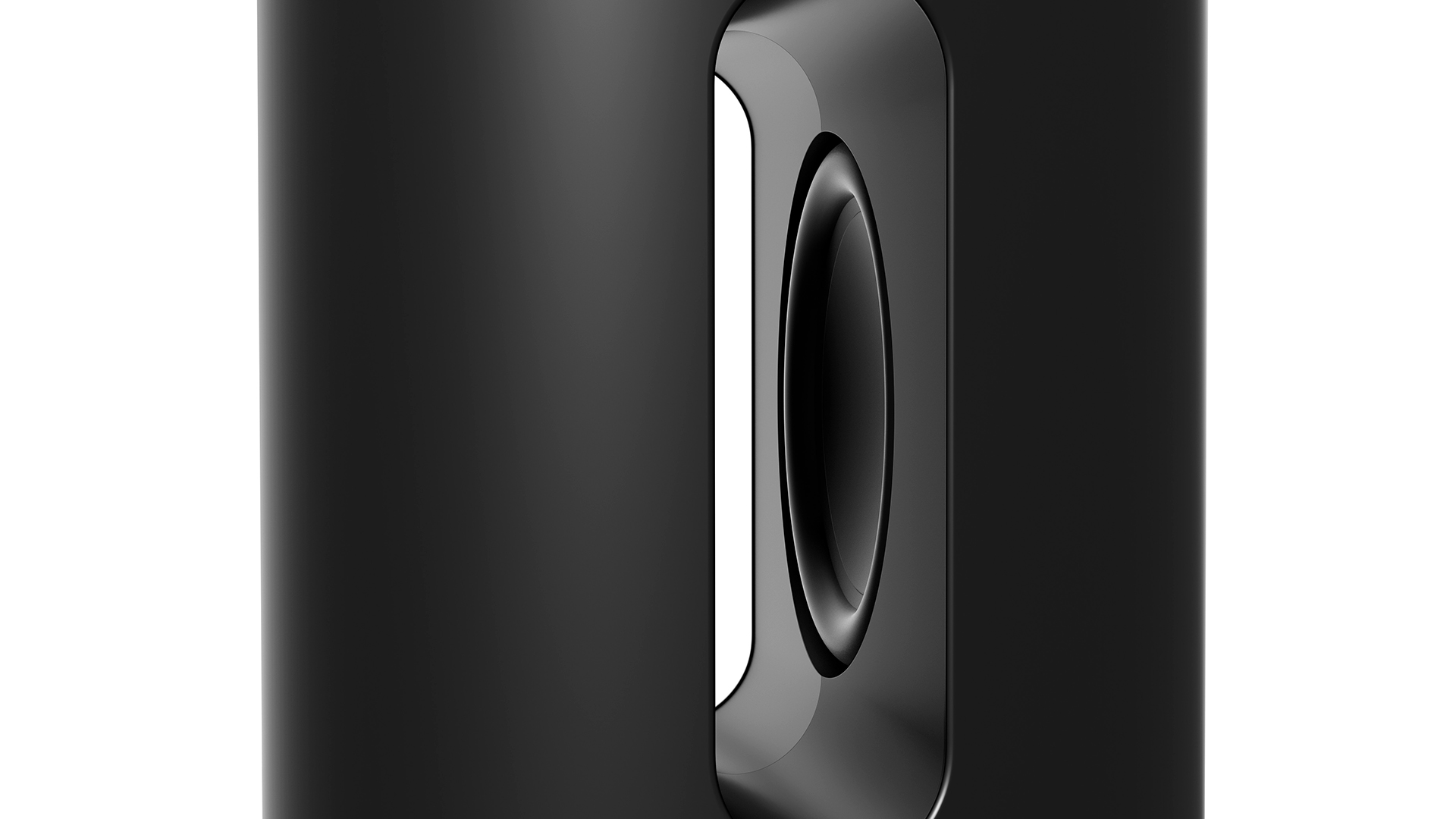What Hi-Fi? Verdict
The Sub Mini is a capable and welcome addition to Sonos’ range but will have limited appeal
Pros
- +
Snappy delivery
- +
No distracting vibrations
- +
Discreet build
Cons
- -
Narrow frequency response
- -
Pricey
- -
Lumpy integration
Why you can trust What Hi-Fi?

We originally reviewed the Sonos Sub Mini when it came out in October 2022, but our opinion of it – and advice regarding it – haven't changed in the intervening years. It is a capable subwoofer that can add heft and depth to the presentation of Sonos's soundbars, but it's not a truly satisfying partner for any of them: with the Ray it's overkill and slightly lumpily integrated, and with the Arc and newer Arc Ultra it's not enough of an upgrade. It works best in partnership with the Beam Gen 2, but it costs just as much as one of those and again, that feels like financial overkill. Our advice to Beam owners with the budget to spare is to upgrade to an Arc Ultra rather than add a Sub Mini, and our advice to Arc and Arc Ultra owners looking to add more bass is to go whole-hog with the standard Sonos Sub. The Sonos Amp, meanwhile, has a traditional subwoofer output, so we recommend that owners of that check out our guide to the best subwoofers. Our original Sonos Sub Mini review is presented below unaltered.
Have you ever wondered where our preoccupation with bass – specifically, the pathological urge to crank it up – stems from? According to a study published in the Journal of Social Psychological and Personality Science, listening to music with a strong bass element can evoke a sense of power in listeners. Or, as Suzi Quatro more bluntly put it, “bass gets you in the groin”.
Whichever way you like to think of it, a robust low end can add thrilling depth to music and scale to film soundtracks, bridging the gap between rhythm, harmony and melody, and is one of the main differentiators between the domestic and the theatrical or live audio experience.
It’s no wonder, then, that high on the wishlist of those looking for a home cinema sound system is a desire to bring a touch of bombastic bass to the humble living room. But in a household space, that can come with a few caveats, throwing up plenty of challenges for speaker manufacturers such as Sonos.
Consumers want a sub that can deliver a powerful punch while not disturbing the neighbours, capable of cinematic low-end extension, but in a cabinet that’s easy to hide away. And, because brands rarely produce more than one or two models, it must also integrate equally well with soundbars of various competencies across its compatible range. This should be an impossible task, but it's one that Sonos has taken on with its latest smart speaker, the Sub Mini, a compact sub that can be added to any of its existing line-up of powered smart speakers.
Build

With a cylindrical design measuring just 23 x 30.5cm, the Sub Mini uses a space-saving driver layout to help maximise its performance while remaining stable within a small cabinet. Inside, a pair of opposing 15cm woofers, each powered by a class-D amplifier, create a force-cancelling effect to minimise unwanted mechanical vibrations caused by the drivers’ motion and produce a claimed low-frequency response that goes down to 25Hz.
Available in Sonos’ standard matte monochrome finishes, the cabinet is entirely sealed to reduce distortion, with a Dyson-like pill-shaped centre tunnel that, Sonos says, helps to move air efficiently while also evoking the looks of the original Sonos Sub. The Sub Mini is very much in keeping with Sonos’ understated aesthetics, the contrasting black centre tunnel on the white colourway venturing as close to flamboyance as the brand dare tread. The build quality overall seems sturdy, though there's a slightly insubstantial, cheap feel to the cylinder’s top plate.
Features

There are sockets for power and Ethernet in a recess underneath the speaker, while at the rear is a Sonos join button. Connectivity for most people will be via a low-latency 2.4/5GHz wi-fi connection, which means the Sub Mini only requires a cable for power.
Adding the Sub Mini to a Sonos system using the Sonos App is as simple as it is with the rest of the brand’s line-up. Once added, the Sub Mini can be linked to any of Sonos’ full-range non-portable speakers. However, the company suggests it will fare better with smaller, more affordable models such as the Beam Gen 2, Ray, One, One SL or IKEA Symfonisk speakers in small to medium-sized rooms.
Unlike Sonos’ original sub, which can be used in a pair, only one Sub Mini can be added to a room. Once synced up to a soundbar or speaker system, volume changes between the two are linked automatically. However, bass level, EQ and phase can be adjusted independently in the Sonos app, where it can also be optimised to the acoustics of your space using Sonos’s Trueplay tuning technology.

Driver Dual 8-inch
Amplification Class D
Low-Frequency Response 25Hz
Calibration options Independent Volume, Phase, Sonos Truplay
Connectivity Ethernet, wi-fi
Dimensions (hwd) 31 x 23 x 23cm
Weight 6.35 kg
The Sonos Sub Mini launches at £429 / $429 / AU$699. That’s considerably less than the brand’s classic Sonos Sub at £749 / $749 / AU$1099, which Sonos recommends using in large rooms with the Arc, Beam Gen 2, Five, and Amp.
We’re not sure how many users spending £279 / $279 / AU$399 on the Sonos Ray will be interested in more than doubling their outlay to improve its limited low end. Even with the Sonos Beam Gen 2, which launched last year at £449 / $449 / AU$699, it seems like a considerable expenditure for an add-on product, especially when you consider that for £899 / $899 / AU$1499 (or frequently less in the sales) you can pick-up the truly impressive-on-its-own, flagship Sonos Arc. Of course, not everyone has space for a soundbar the size of the Arc, but it's disappointing that the Sub Mini is the same price, or more expensive, than all the products it is designed to supplement.
Sound

For this review, we pair the Sub Mini with all three of the brand’s soundbars, and how well it fares varies with each model – however, there are some consistent characteristics across the board. The Sub Mini has a quick, responsive sound that sets it apart from the loose, bland vagueness of many other soundbar subs. And indeed, throughout our testing, the Sub Mini always maintains prudent control, and we don’t hear any unwanted rattles or buzzes.
However, despite its speed, there’s not much shape or texture to the sound the Sub Mini produces, leavening it a little one-dimensional, particularly with music, such as Fiona Apple’s Under The Table, where the upright bass is stripped of much of its tonality and, rather than being an equal part of the ensemble, becomes more of a monotone support.
With films, the Sub Mini has a more positive impact where it makes handy work of the low, ominous drones that abound in soundtracks and helps underline big sonic moments.
Starting with the Ray soundbar and the bass-fest that is Dune on Blu-ray, the Sub Mini opens out the soundtrack, revealing the low-frequency elements underpinning much of the score that the soundbar alone couldn’t touch with a barge pole. In the opening sequence, there’s more weight and scale to the Bene Gesserit, the bursts of drums and the clamour of the spice harvesting machines, with each of the sudden shifts gaining emphatic impact.
While the Sub Mini kicks out an impressive amount of volume for its size, the amount of SPL seems to vary quite a bit across its range, meaning that it's more prominent with certain frequencies than others. The crossover region between the Ray and Sub Mini suffers a bit from a dip in volume from both parties, which leaves this pairing sounding a little lumpy, and perhaps the least successful of the three soundbars we try.
In some ways, contrary to Sonos’ pairing notes, it is with the Arc where the Sub Mini feels the most solidly integrated. Listening to SBTRKT’s Trials Of The Past, the deep bass, crisp percussion and clicky synths are neatly joined up. The Sub Mini adds a seasoning of quaking depth that, while it might not satisfy everyone, feels well-measured. But it would be fair to say that in this configuration, the Sub Mini’s effect is subtle unless you increase its individual level, which leaves the system exposed to sounding boomy and masking higher frequencies.
Perhaps unsurprisingly, the Sonos Beam Gen 2 was the soundbar that gained the most from being paired with Sub Mini, the two being more evenly matched in volume and range. Watching No Time To Die, some of the more stylistic sound design moments, such as after the bomb blast at Vesper’s tomb when all the higher frequencies are filtered out, are done plenty of justice, while elsewhere, the grandiosity of the score and action is more richly realised.
Verdict

The Sub Mini delivers on Sonos’ aim to bring a big sound to small spaces with a carefully controlled and quick performance that can combine easily with a variety of the brand’s speakers. Some may find it a little too well-mannered, and it’s not remarkably detailed or tonally sophisticated. Still, the Sub Mini unlocks more scale and depth from film soundtracks and music and does so, on the whole, without drawing attention to itself.
It’s with the Beam Gen 2 that Sub Mini gives its best performance, and we’d avoid pairing it with the Ray. But ultimately, if you have a budget of £900 / $900 / AU$1500 to spend on a soundbar system, a solo Arc will deliver a more cinematic experience.
SCORES
- Sound 4
- Build 4
- Features 4
MORE:
Read our review of the Sonos Sub
Also consider the Samsung HW-Q800A
Read our LG Eclair QP5 review
These are the best soundbars: excellent TV speakers at budget to premium prices
What Hi-Fi?, founded in 1976, is the world's leading independent guide to buying and owning hi-fi and home entertainment products. Our comprehensive tests help you buy the very best for your money, with our advice sections giving you step-by-step information on how to get even more from your music and movies. Everything is tested by our dedicated team of in-house reviewers in our custom-built test rooms in London, Reading and Bath. Our coveted five-star rating and Awards are recognised all over the world as the ultimate seal of approval, so you can buy with absolute confidence.
-
tones In a word, no. We tried one to go with our (excellent) Beam 2 soundbar. Did it improve the sound? - yes, but not sufficiently to justify that price tag. In addition, my wife, who has better hearing than mine, found it unbearably boomy at times, so much so that it obscured the dialogue in films. So back to Sonos it went. Pity, it was nicely made and quite unobtrusive physically, but, in our opinion, the sound simply didn't match the price.Reply -
Lsi Sounds like this commenter didn’t TruePlay tune the sub, which should have eliminated boominess. I think many Sonos owners don’t realize what they have, as the entire reason their price premium is worth it is because of how good TruePlay tuning is. Without using it, you are at the mercy of your environment and your own placement choices as with the majority of Sonos’ competition.Reply -
tones True Play? Never heard of it. Nor do I remember any mention of it in the Sonos literature. Them's the breaks.Reply -
Lsi Android phone? The function may still only work for iPhones re the app needing to be able to trust the internal mic calibration etcReply

